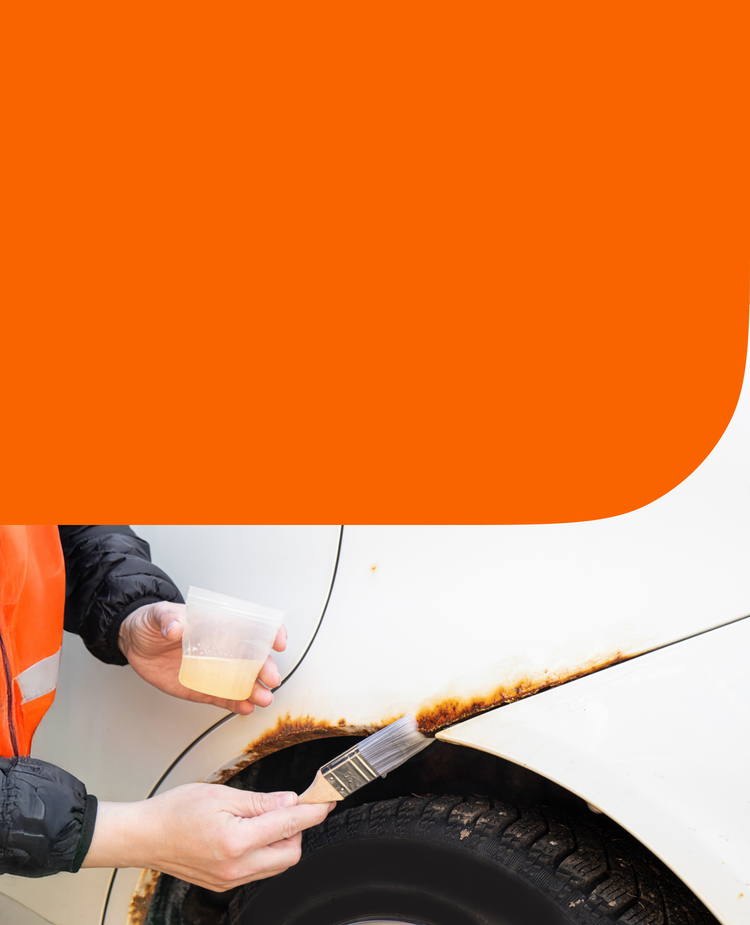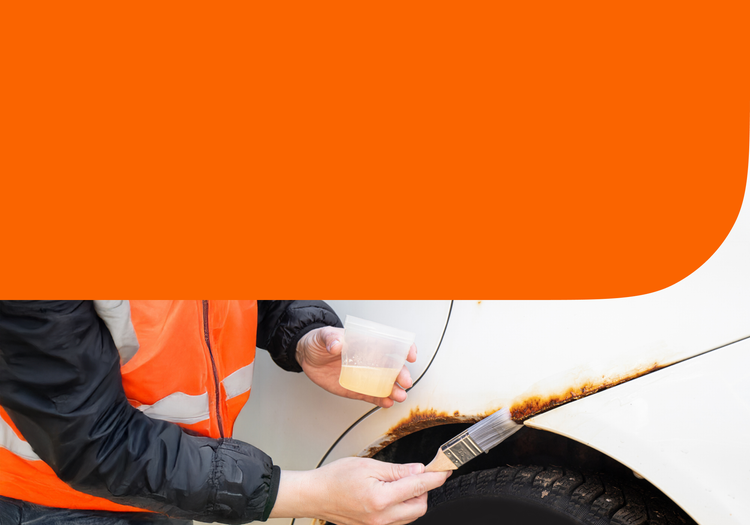
top, right

top, right

Express Lane{ca-indigo-700}
How to Fix Rust on Your Car
Finding rust on your car is almost always bad news. It makes metal weaker, lowers the value of the car and just plain looks bad. But there are some things you can do to bring your car back if you encounter rust spots.
First, it helps to understand what you are dealing with. Rust is a chemical reaction. Oxidization takes place when bare metal encounters moisture, such as rain or humidity. The result is the familiar, flaky reddish-brown crust.
The problem with rust is that it can spread over time, meaning a small patch can become larger if left unchecked. That means that if you see rust on your car, it is worth addressing.
Making Rust Repairs
The painted finish on today’s cars is excellent and can resist rust and corrosion far better than cars made in decades past. You are unlikely to have rust problems unless the car is scratched or otherwise damaged, removing the finish and leaving bare metal exposed.
A scratch received in a parking lot, for example, could rust over time if left untreated. The solution is to get that metal covered quickly.
You could turn to a professional body shop, and many people do. However, you can also take a do-it-yourself approach to small scratches. Many auto manufacturers and aftermarket retailers sell touch-up paint pens or applicators that allow you to color-match your car.
You simply clean the area, dry it thoroughly and apply paint over the scratch. Some treatments may call for primer before the paint and clear coat afterward. After all is done, you can use wax or polishing compound to shine it up. Companies like TouchUpDirect.com sell kits with instructions that can make the job easier.
It may not look factory perfect, but it is a cost-effective solution that will keep the metal covered and prevent, or at least inhibit, rust.
When to Call Professionals
Larger rusted areas are more complicated. YouTube is full of videos on how to address auto rust, but they involve grinding, sanding, filling, priming and painting. If these are not in your skill set, it may be prudent to let the professionals deal with larger rust problems, or to replace sections of your car’s body entirely.
For example, if you have a heavily rusted quarter panel, it may be better to replace the panel than to repair what you have. This can be done with a new part that matches the color of your car or you can obtain a used part and have it painted. Which option you choose will likely be decided based on costs, the availability of parts and how quickly repairs can be completed.
Of course, a car with major rust problems may have other maintenance problems, too. If it is time to replace your car, take the first step by exploring auto financing. Getting pre-qualified with Credit Acceptance will help you determine what your budget for a new or used car looks like, before you even visit a dealership. You can then go shopping with confidence.